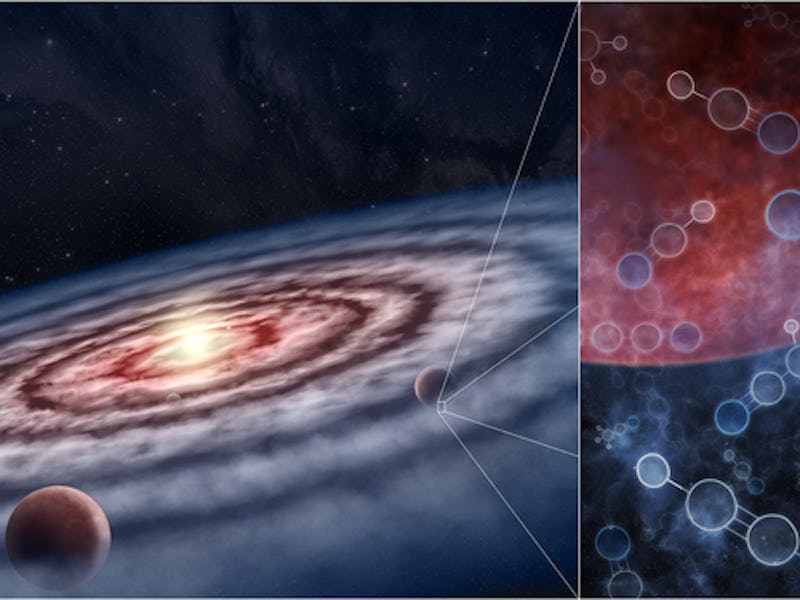Astronomers find the molecules behind the “origins of life” in young star systems
Astronomers found reservoirs of organic molecules around young stars.

Astronomers have found the seeds of life circling around young stars, potentially increasing the chances of life found throughout the universe.
The recent discovery suggests that the ingredients of life may be 10 to 100 times more abundant in the raw discs of material from which planets form.
In a series of 20 papers published Wednesday in the preprint server arXiv and accepted for publication in The Astrophysical Journal, scientists detail the discovery of organic molecules around five protoplanetary discs circling young stars.
The same type of disc once surrounded the Sun, forming the planets of the Solar System.
“These planet-forming disks are teeming with organic molecules, some which are implicated in the origins of life here on Earth,” Karin Öberg, an astronomer at the Harvard-Smithsonian Center for Astrophysics and lead author of one of the studies, said in a statement. “This is really exciting; the chemicals in each disk will ultimately affect the type of planets that form — and determine whether or not the planets can host life.”
What’s new — Stars are born from clouds of dust located within galaxies.
Around each young star is an orbiting disc of dust and gas particles, and these particles combine to form planets like the Earth. The disks form in unison with their host stars, and the grains of dust in the disks can keep colliding until they form a planet.
The astronomers probed the composition of five discs surrounding young stars using the Atacama Large Millimetre/submillimetre Array (or ALMA) radio telescope in Chile.
The stars were located 300 to 500 light years away from Earth.
Each team was searching for certain organic molecules in those discs. Organic compounds are considered the building blocks of life on Earth — which could carry over to elsewhere in the universe.
Scientists believe that these organic compounds made their way to Earth through asteroids or other space rocks that crashed into the planet billions of years ago. These asteroids or comets would have formed from the same material that formed the Earth, the protoplanetary disc.
However, they were unsure if all protoplanetary discs contained these organic molecules.
The organic molecules were found in four out of the five disks, and they were much more abundant than the scientists had anticipated.
“Our analysis shows that the molecules are primarily located in these inner regions with abundances between 10 and 100 times higher than models had predicted,” John Ilee, a research fellow at the University of Leeds and lead author of one of the studies, said in a statement.
The protoplanetary disc around HD 163296, where some of the chemicals for forming life were found.
Why it matters — The regions where the molecules were found are also the same regions that produce asteroids and comets, reaffirming the theory that the seeds for life travel onboard these space rocks.
"The key result of this work shows that the same ingredients needed for seeding life on our planet are also found around other stars,” Catherine Walsh, a researcher at the School of Physics and Astronomy and co-author of one of the studies, said in a statement. “It is possible that the molecules that are needed to kick-start life on planets are readily available in all planet-forming environments.”
The observations also showed that the chemicals were not evenly distributed in the protoplanetary discs, with each disc containing a different mix of planet-forming soup. This shows that each planet forms from a different mix of ingredients, producing a different planet.
“Many of the chemicals in the disks are organic, and the distribution of these organics varies dramatically within a particular disk,” Öberg said. “Two planets can form around the same star and have very different organic inventories, and therefore predispositions to life.”
WHAT’S NEXT — The team of astronomers behind the new study is anticipating the upcoming James Webb Telescope launch.
The telescope will help them probe the composition of the discs around young stars, examining the molecules in greater detail.
This article was originally published on